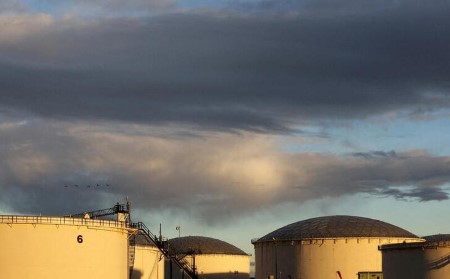




Philippines Trade Update: Trade trajectories trend along
 DOWNLOAD
DOWNLOAD

Policy Rate Updates: Double cut finale
 DOWNLOAD
DOWNLOAD

Monthly Economic Update: One for the road
 DOWNLOAD
DOWNLOAD


Oil prices rise on tight supply worries, soft dollar supports

July 19 (Reuters) – Oil rose slightly on Tuesday, paring earlier losses and after soaring by more than USD 5 barrel in the previous session, amid concerns about tight supply.
Brent crude futures for September settlement gained 17 cents to USD 106.51 a barrel by 0645 GMT. The contract rose 5.1% on Monday, the biggest percentage gain since April 12.
WTI crude futures for August delivery rose by 36 cent to USD 102.96 a barrel. The contract climbed 5.1% on Monday and the largest percentage gain since May 11.
The August WTI contract expires on Wednesday and the more actively traded September future was at USD 99.74 a barrel, up 32 cents.
Oil prices have been whipsawed between concerns about supply as Western sanctions on Russian crude and fuel supplies over the Ukraine conflict have disrupted trade flows to refiners and end-users and rising worries that central bank efforts to tame surging inflation may trigger a recession that would cut future fuel demand.
The underlying supply/demand imbalance is as tight as ever,” said Jeffrey Halley, senior market analyst at OANDA, in a note. “Oil prices may have peaked, but they certainly don’t look like they’re going materially lower from here unless we get a huge surprise from OPEC+.”
US President Joe Biden visited top oil exporter Saudi Arabia last week, hoping to strike a deal on an oil production boost to tame fuel prices.
However, officials from Saudi Arabia, the de facto leader of the Organization of the Petroleum Exporting Countries (OPEC), did not give clear assurances an output increase was secured.
Warren Patterson, head of Commodities Strategy at ING, said in a note that the market has had time to digest President Biden’s visit with a conclusion that it is unlikely that OPEC and its allies including Russia, known as OPEC+, will increase output more aggressively than planned in the short term.
Oil prices were backed by a softer US dollar on Tuesday, which stood around a one-week low level, making greenback-dominated oil slightly cheaper for buyers holding other currencies.
“A weaker USD provided support to the market, along with the broader commodities complex,” ING’s Patterson said.
The forecast of oil inventories in the US, the world’s biggest oil consumer, was that crude and distillate supplies may have risen last week while gasoline stockpiles likely fell, according to a preliminary Reuters poll.
(Reporting by Stephanie Kelly and Muyu Xu; Editing by Christian Schmollinger)
This article originally appeared on reuters.com





 By Reuters
By Reuters